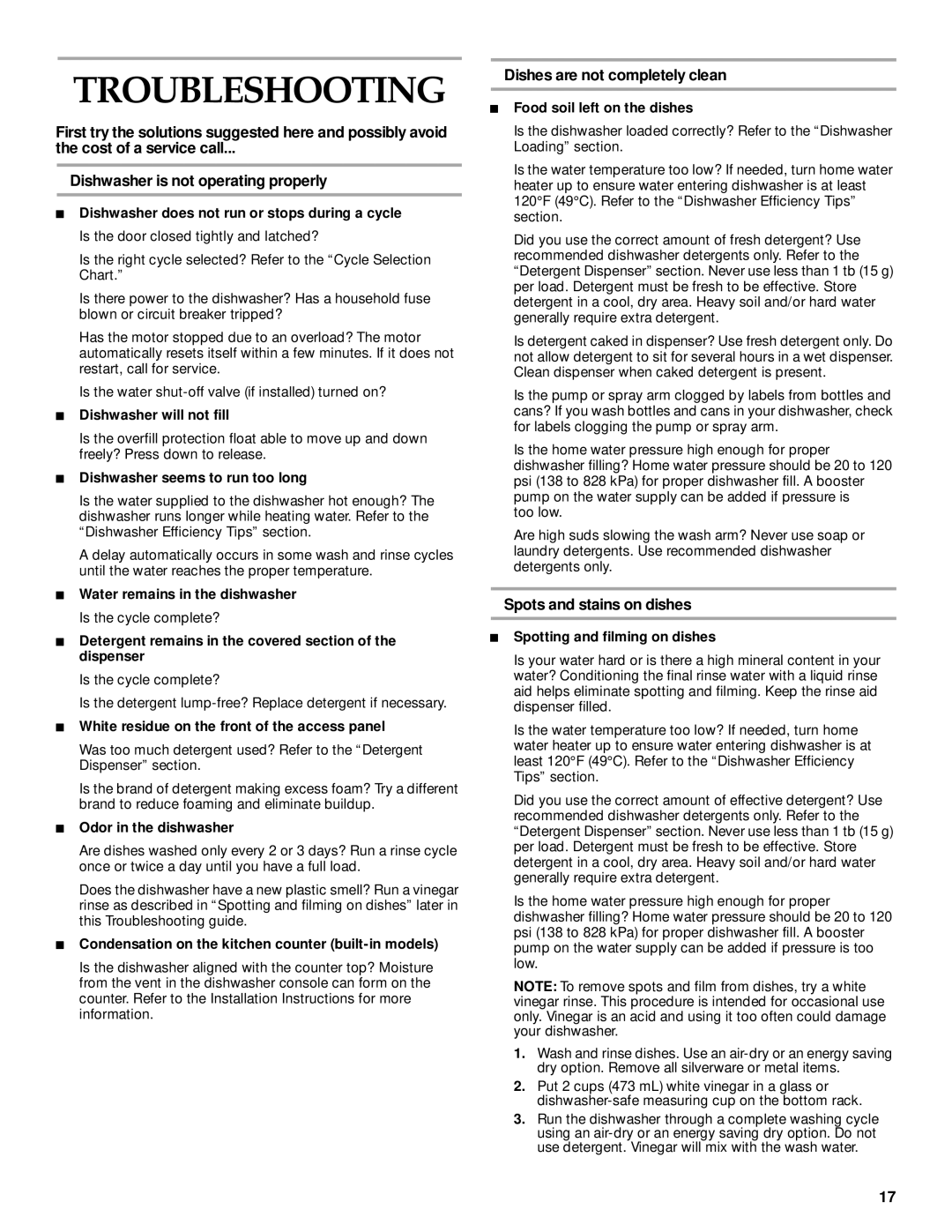KUDP01TJ specifications
The KitchenAid KUDP01TJ is a dynamic and stylish undercounter dishwasher that blends performance and innovation. This appliance is designed to fit seamlessly into your kitchen while enhancing your dishwashing experience. One of the standout features of the KUDP01TJ is its compact design, making it ideal for smaller kitchens or for those who desire an additional dishwasher in their home.Equipped with a high-efficiency washing system, the KUDP01TJ offers thorough cleaning power. Its powerful spray arms provide multiple angles of water distribution, ensuring that every dish, pot, and utensil receives the attention it needs. The dishwasher utilizes a unique wash system that adapts to your load size, optimizing water and energy consumption without compromising on cleanliness.
The KUDP01TJ also boasts a range of cleaning cycles tailored to various dishwashing needs. The Normal cycle is perfect for everyday loads, while the Heavy cycle effectively tackles stubborn, baked-on food. An Express wash cycle allows for a quick clean, perfect for when you're in a hurry. In addition to these, the appliance features a Sanitize option that removes 99.9% of food particles and bacteria, promoting a safe and hygienic kitchen environment.
Another notable technology featured in this model is the ProWash™ cycle. This intelligent wash system assesses the soil level of the dishes and adjusts the cycle accordingly, ensuring optimal cleaning performance every time. The dishwasher is also designed with a Quiet operation in mind, employing sound-dampening materials that keep noise levels to a minimum, allowing for an uninterrupted kitchen space.
The KUDP01TJ includes a spacious interior with an Adjustable upper rack and a dedicated utensil basket, providing flexible loading options for all your dishes. Its sleek stainless steel interior resists stains and helps maintain a hygienic wash environment. The exterior is equally well-designed, featuring a fingerprint-resistant finish that keeps it looking pristine.
In summary, the KitchenAid KUDP01TJ is a feature-rich undercounter dishwasher that offers a blend of innovative technology, flexibility, and efficient cleaning performance. It is a perfect addition for homeowners seeking to enhance their kitchen functionality without sacrificing style. This dishwasher ultimately promises a reliable and effective dishwashing solution tailored to modern lifestyles.

